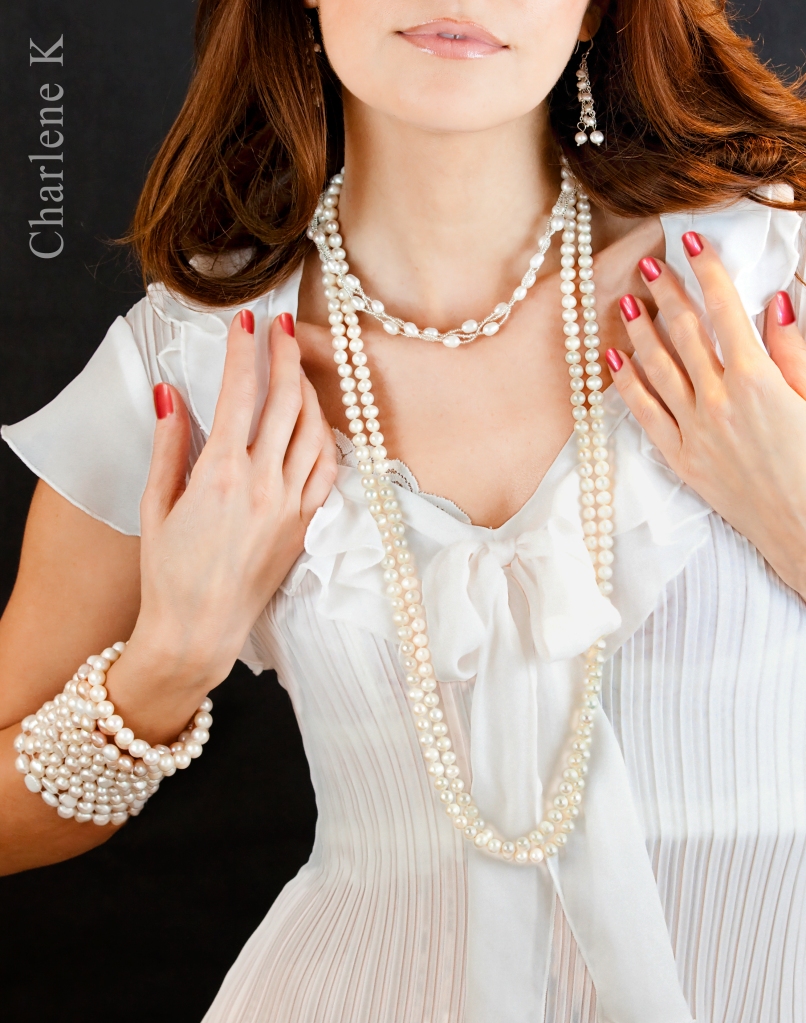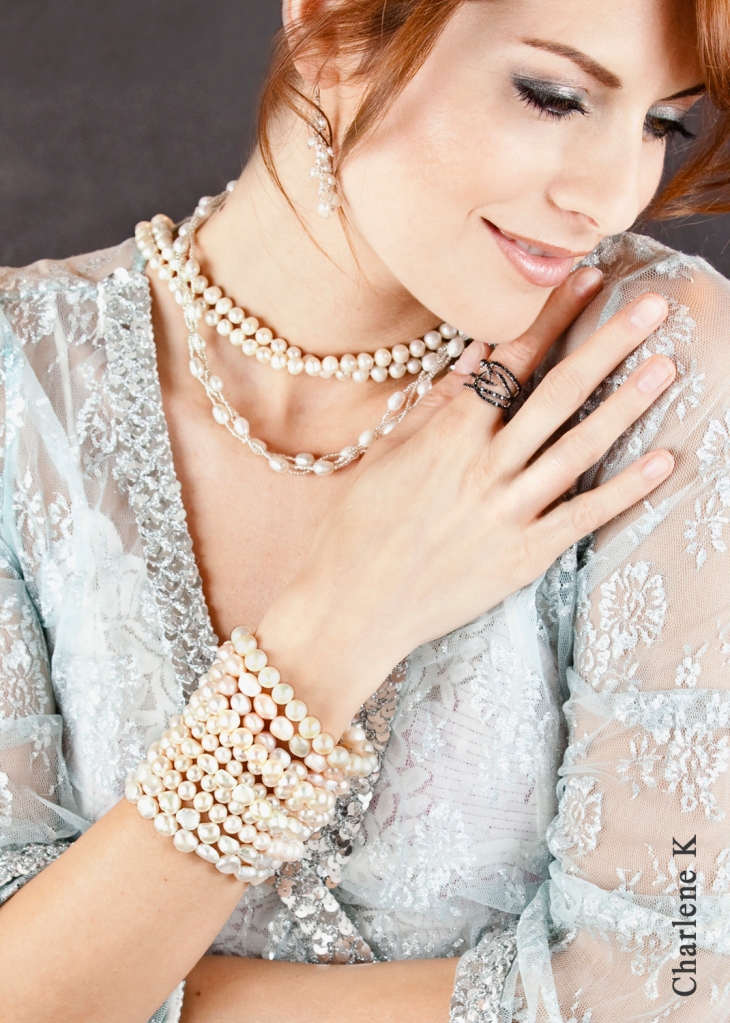Classic, Forever Gorgeous Charlene K Pearl jewelry Collection!
Pearl jewelry has been a thing of the past and present and will likely continue to have a presence in the foreseeable future.
This gem never goes out of style. Pearls! Charlene K’s high quality Fresh Water Pearl jewelry collections are for every style, dress and occasion. They come in a variety of sizes, colors and arrangements perfect for jeans, or an evening gown. For more information, please contact us at: info@CharleneK.com
__________________________________________________________________________________________________
The Journey of a Pearl
The Making of Freshwater Cultured Pearls
Traditional pearl cultivation involves first inserting a bead nucleus, then a piece of mantle tissue, inside a mollusk. Not long after this method began, pearl farmers discovered, quite accidentally, that nacre (NAY-ker) could form around mantle tissue without the presence of a bead nucleus. Leaving out the bead nucleus made the process easier and soon, this became an accepted means of production. Most freshwater pearls are nucleated only with a small piece of mantle tissue, although great strides have been made in recent years to produce bead-nucleated freshwater pearls.
Fresh water pearls make up more than 90% of today’s world wide pearl market, and have never been so large, or so widely accessible in human history. Although fresh water pearls have been found all over the world.. the most notable cultivations have been in the US, Japan and China. Dependent on the shell they are harvested from … the natural colors can vary wildly from white,cream, through golden,pink, lavender and sometimes soft blue. Beyond the natural colors, Chinese fresh water pearls are available in a dizzying array of non-natural dyed and treated colors.
Pearl Care
The oysters are given the utmost care during this time while suspended in the water. From the rafts above, technicians check water temperatures and feeding conditions daily at various depths, moving the oysters up or down as appropriate. Periodically, the oysters are lifted from the sea for cleaning and health treatments. Seaweed, barnacles and other seaborne organisms that might interfere with their feeding are removed from the oysters’ shells. The shells are also treated with medicinal compounds to discourage parasites.
Over time, after eight to 36 months of growth and care, the oysters are ready for harvest. Those that have survived the many perils of the sea are brought ashore and opened. All pearls must be cleaned and washed to remove residue and odors. They are typically tumbled in rotating barrels with salt during this procedure. The tumbling must be closely monitored; otherwise some of the nacre may wear off.
When everything has gone well, a beauty is revealed — the result is a lovely, lustrous and very valuable cultured pearl. Chinese freshwater pearls and Akoya pearls are often treated with chemicals after drilling. This whitens them and makes the color look more even.


